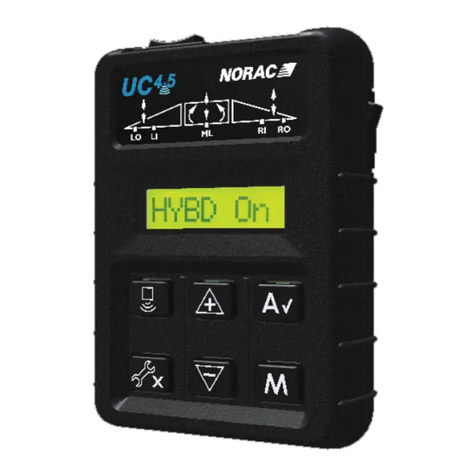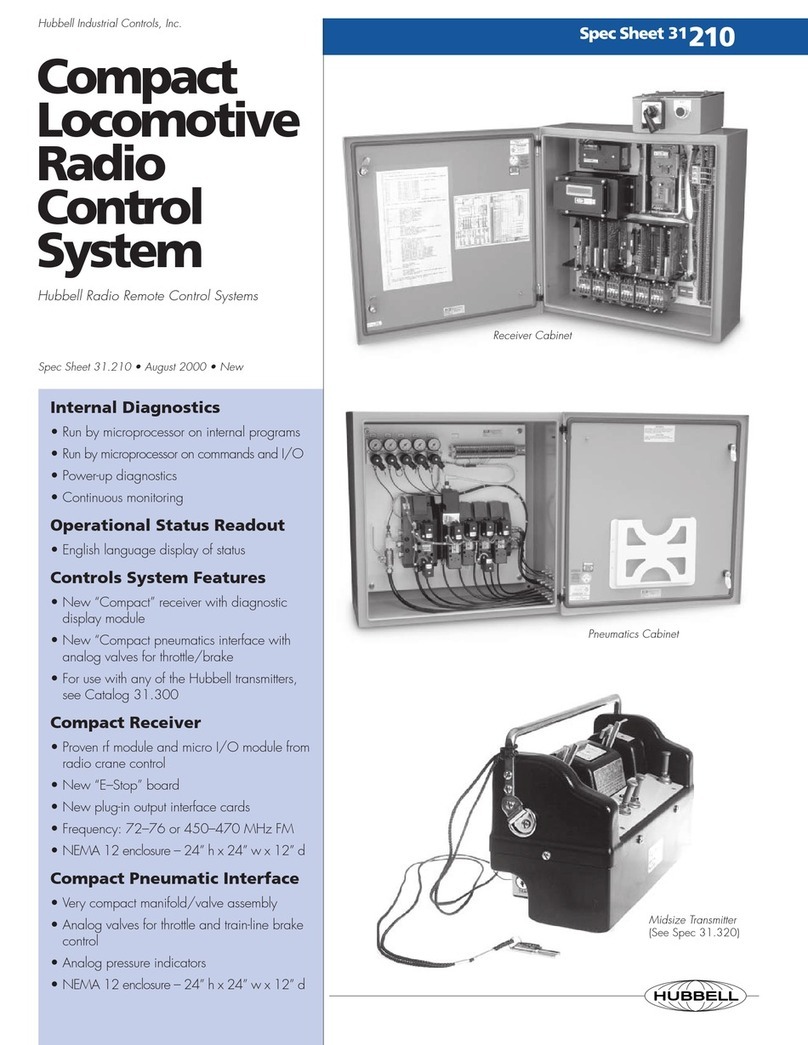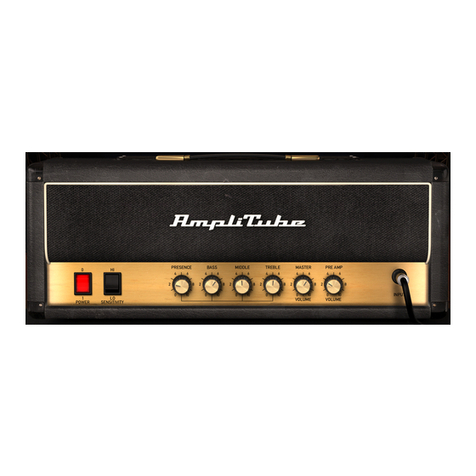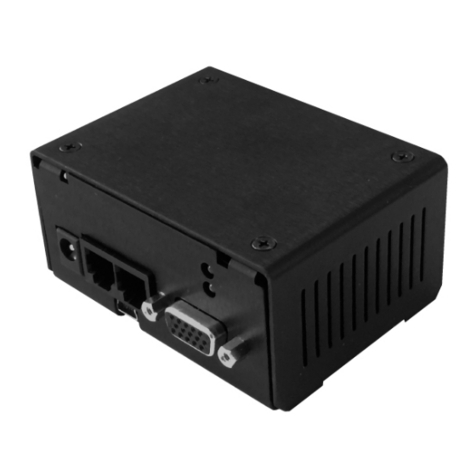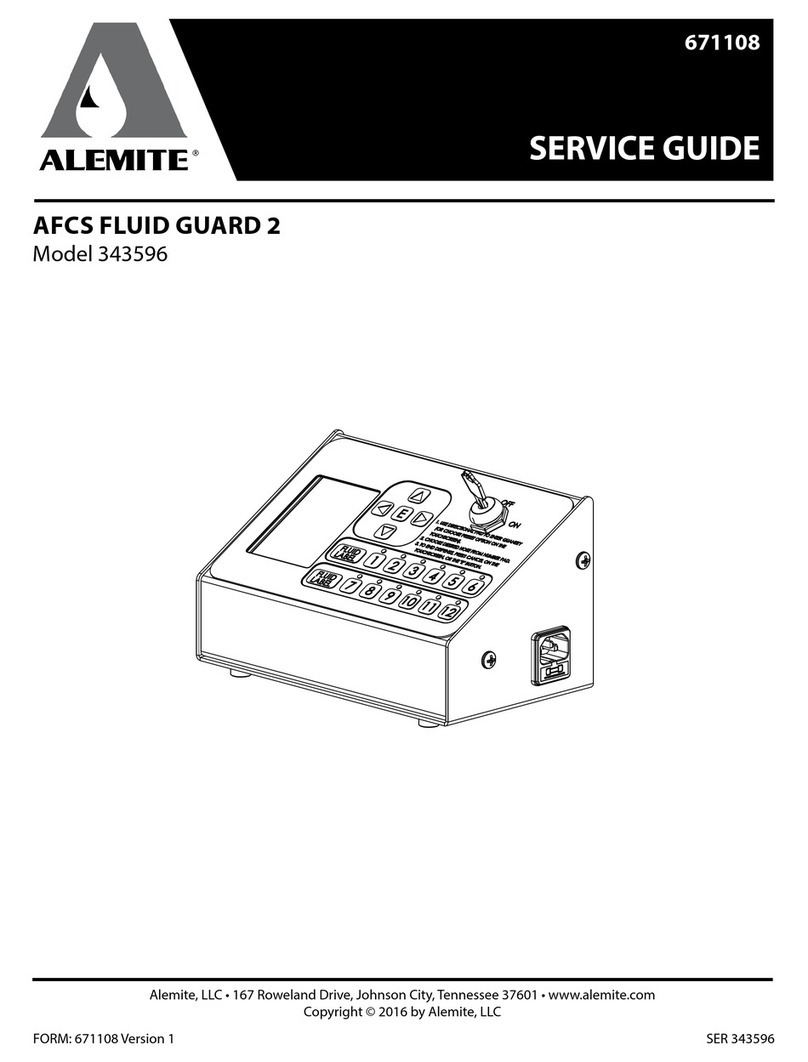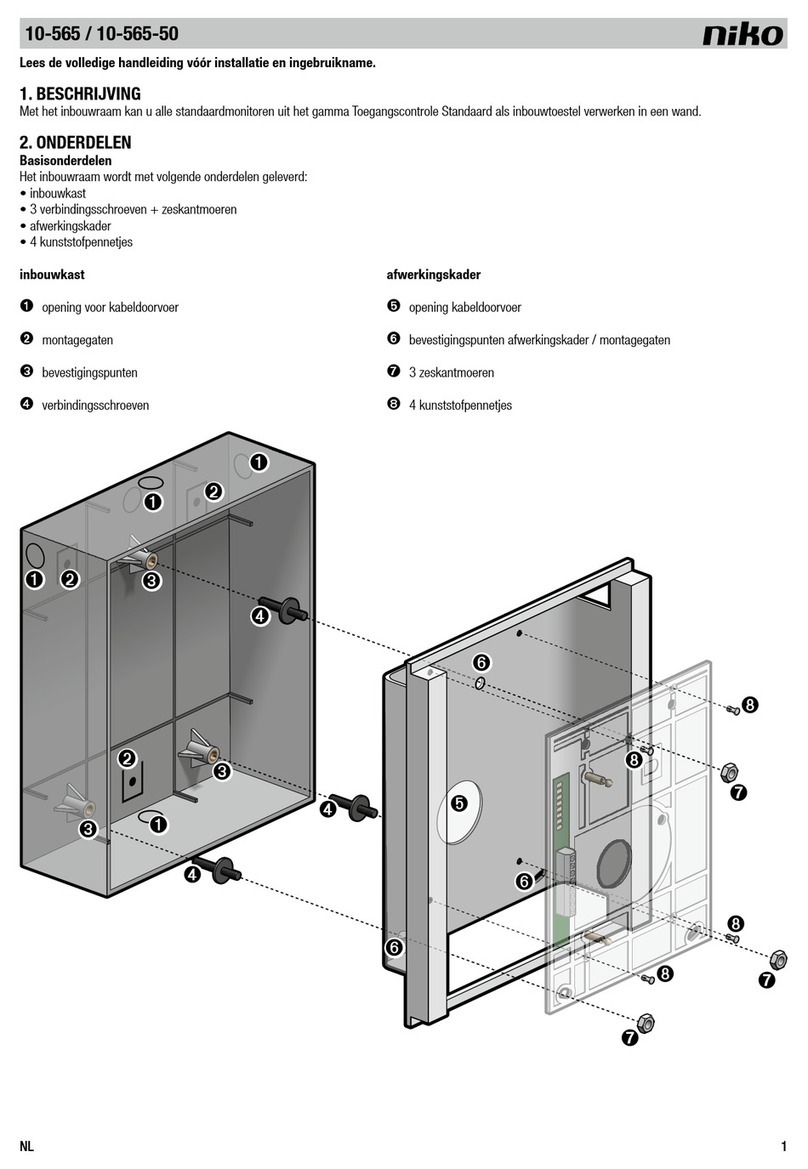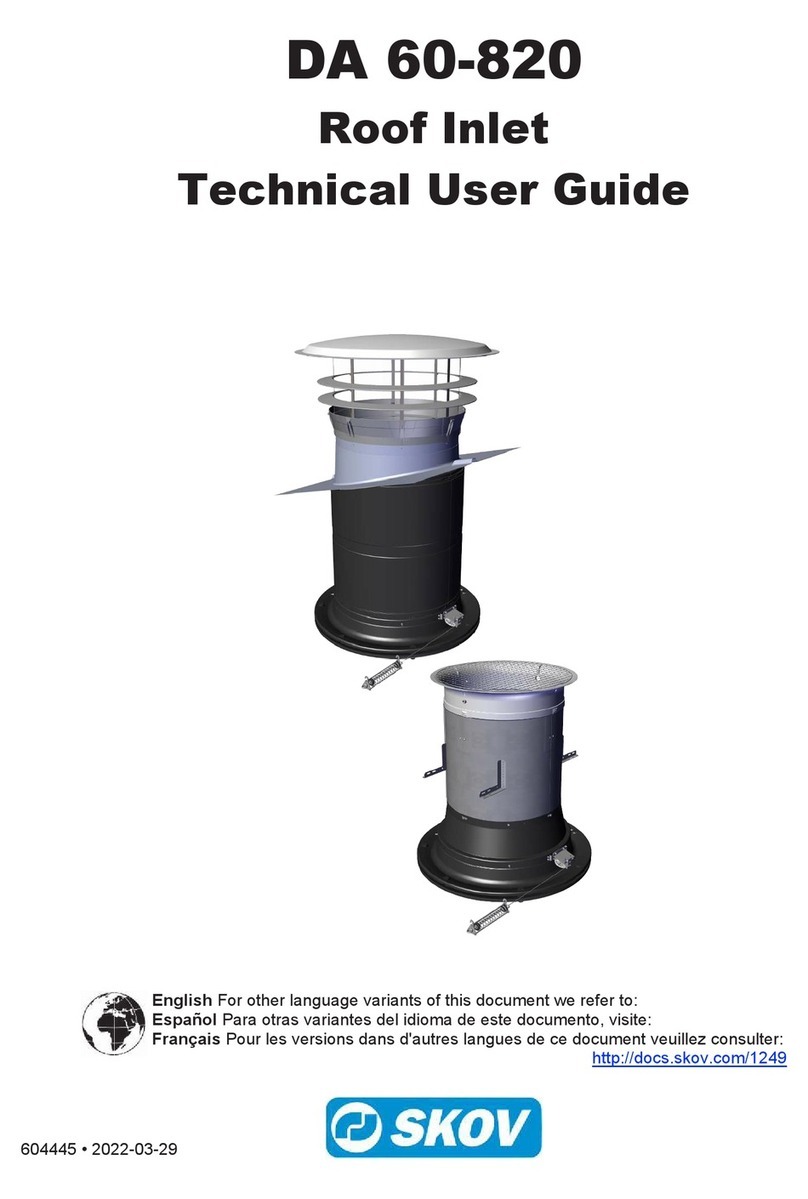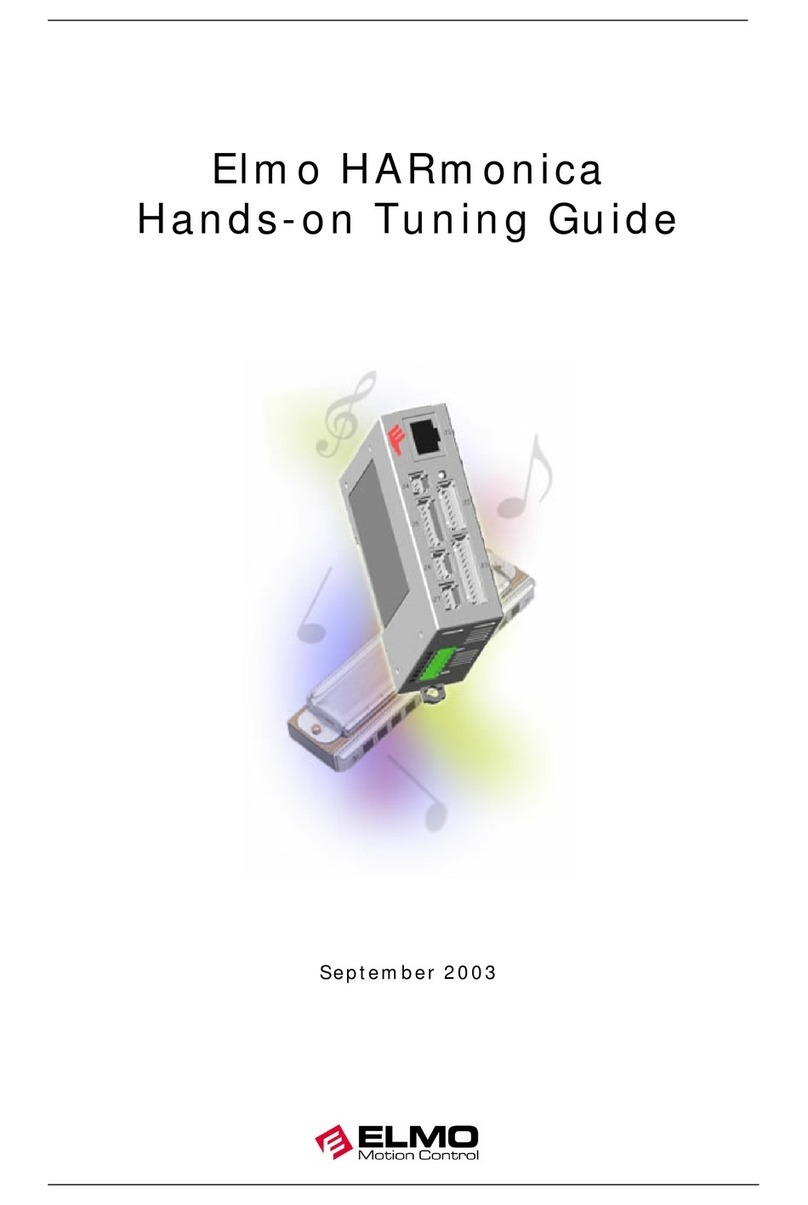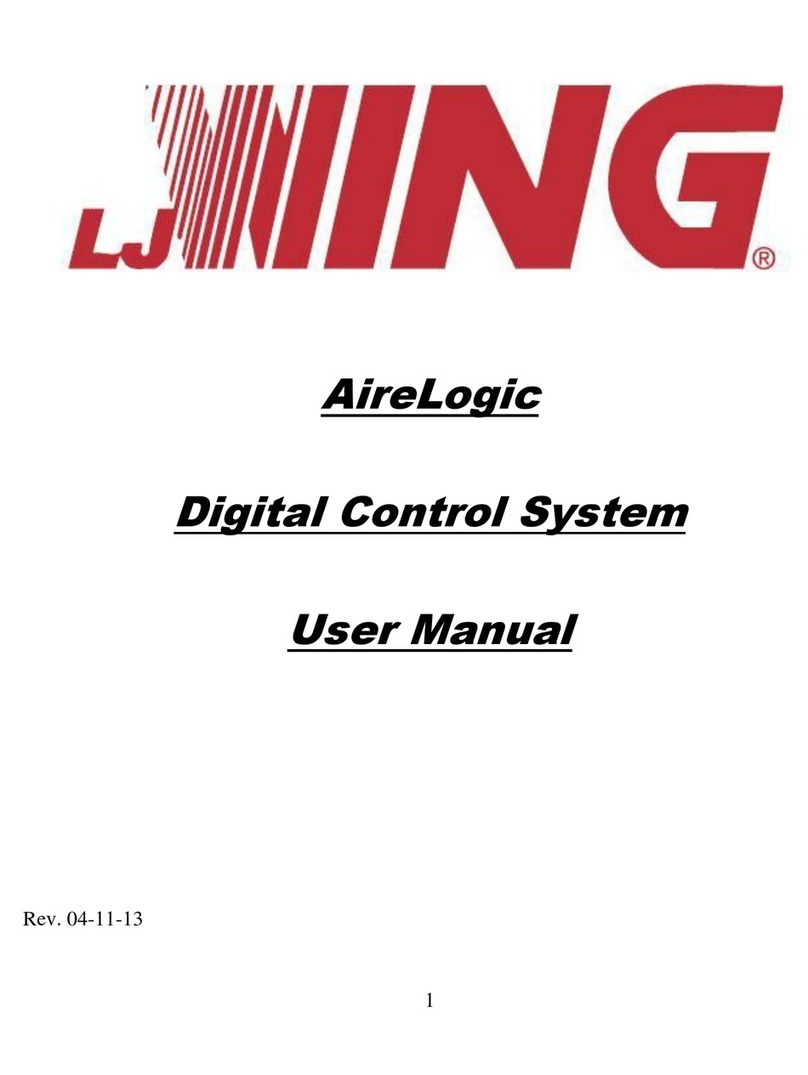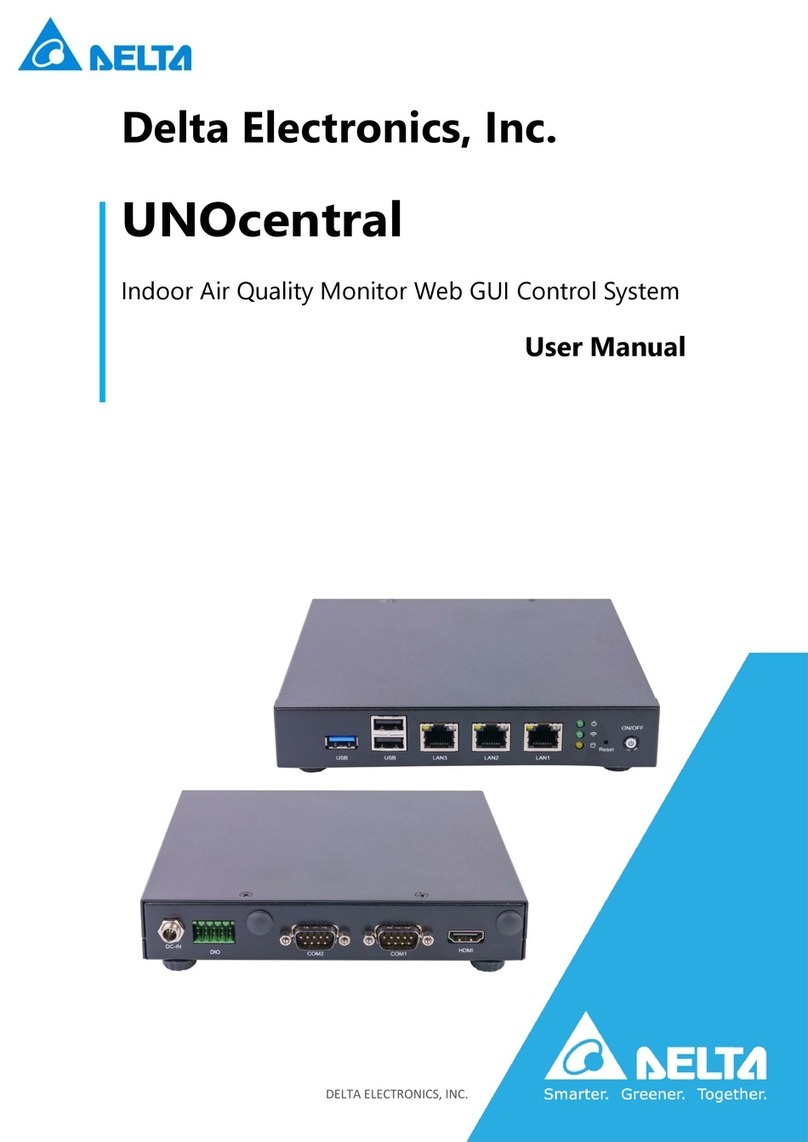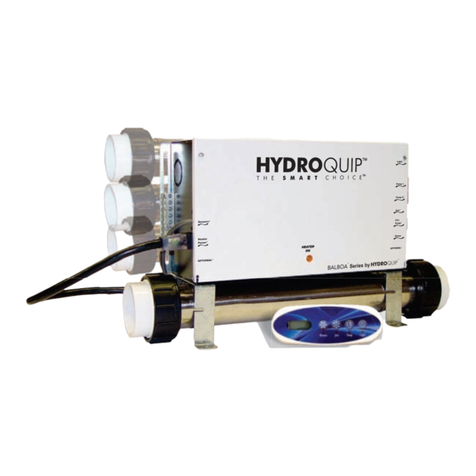STREETEC autoleveling User manual

STREETEC autoleveling
Air Suspension Control System
English
AN 1010 - EN - R1.0

STREETEC Autoleveling
Installation Guide
Version AN 1010 - EN - R1.0
Air Suspension Control System
English

Prologue
congratulations on the purchase of your STREETEC autoleveling. Read the
following instructions carefully and follow them to prevent possible damage.
We assume no liability for damage caused by disregarding the instructions and
improper use. Scan the QR code to access the latest operating instructions
and further information about the product.
Dear Customer,

Content
8 Safety instructions
9 General information
10 Basics
12 ECU
16 Touchscreen
20 valve 4
22 Water separator
26 Pressure sensors
30 Height sensors
38 Installation Cable set
44 Connection diagram
46 Installation airlines
48 Airline/ttingassembly
49 Disassemblingairline/tting
50 Autoleveling APP
52 Quick Start Guide
66 Settings
70 Troubleshooting
72 Component list
74 Warranty
76 Declaration of Conformity
77 Notes on disposal
78 Manufacturer information

Use the STREETEC autoleveling exclusively for aftermarket air suspensions.
In the event of a defect, do not attempt to repair the device yourself. Leave this to
the manufacturer.
Safety instructions
•Never install the STREETEC autoleveling with the ignition switched on. Remove the ignition key.
After switching off the ignition, wait 5 minutes until all electrical consumers are switched off.
•Make sure that the cables and hoses do not touch or rub against moving parts or metal parts. If
malfunctions occur due to cables and hoses that are not attached or if they are not installed properly,
themanufacturer‘swarrantywillbevoided.
•To prevent injury during installation, wear personal protective equipment.
•Any manipulation of the product, such as on the housing, is not permitted. Such interference will void
themanufacturer‘swarrantyofSTREETECautoleveling.
•Work on electronic and pneumatic components of the vehicle as well as work on the STREETEC
autoleveling must be carried out by trained specialist personnel.
•Keep the housing and all components of the STREETEC autoleveling as dry and free of dirt as
possible.
•Make sure that the pneumatic and electrical characteristic values are observed.
General information
The STREETEC autoleveling is used to control the vehicle height of motor vehicles with aftermarket
air suspensions.
These instructions provide important information on handling the STREETEC autoleveling. A
prerequisiteforsafeoperationiscompliancewithallspeciedsafetynotesandinstructions.
Read these instructions carefully before installation so that you can benet from all the technical
advantages of the system in the long term. Only carry out the installation if you have read and
understood these installation guidelines. We recommend installation by a specialist workshop.
The STREETEC autoleveling was developed and produced with great care. Therefore, it should also
be installed with care. If you follow the instructions listed, you will prevent the warranty from expiring
prematurely and you will continue to enjoy your system for years to come.
8 9

ECU ECU
1. Select a mounting location for the component. The mounting location should be dry and allow the
ECU to be held securely.
2. Check that you can guide the cable harnesses to the intended location.
3. UsethesupplieddrillingtemplatetodrilltheholesiftheECUistobemountedlyingat.
4. ConnectthewiringharnessesbeforexingtheECU.Thiswillmaketheworkalittleeasier.
5. Then attach the ECU directly to a surface or to the bracket.
The ECU (Fig. 1) of the STREETEC autoleveling consists of a high-quality aluminum housing with a
high-gloss acrylic glass cover. We recommend handling the ECU carefully during installation so as not
to impair its optical properties.
TheECUmustbermlyscrewedintothevehicle.Otherwise,calibrationmaynotbe
carried out accurately and control problems may occur!
Inthescopeofdeliveryyouwillndadrillingtemplateforeasypositioningand
mounting of the ECU!
Abb. 1: STREETEC autoleveling - ECU
The ECU is designed to be mounted in the vehicle in several ways:
•lyingatwithcompletelyhiddenwiring
•screwed to a holder (a holder is included in the scope of delivery with which the ECU can be
mounted upright).
10 11

Product details
Technical data - ECU
Product STREETEC autoleveling - ECU
Item number 2013 0 0004
Weight 363 g
Elektrische Details
Rated voltage 12V
Dimensions (L x W x H) 124,5 mm x 107,5 mm x 60,5 mm
Current (without display) 50mA
Dimensions - ECU
124,5 mm
60,5 mm
124,5 mm
107,5 mm
R 7,5mm
124,5 mm
85 mm
107,5 mm
Current (with display) 300mA
max. current (with controlled valves) 10A
12 13

Touchscreen
The touch screen of the STREETEC autoleveling has numerous technical innovations that give the
system a very special value!
• The capacitive touchscreen works according to the same principle as a smartphone. Commands
are only made via touch without pressure.
• The system supports multi-touch mode. This allows different functions to be executed
simultaneously or in combination.
• A haptic feedback creates the impression of pressing real keys.
• Dimming when the driving lights are on increases safety when driving at night.
• Theuserinterfaceisindividuallycongurableforupto3differentusers.
The control panel (touch screen, Fig. 2) of the
STREETEC autoleveling consists of a
highquality aluminum housing with integrated
neodymium magnets.
With the help of the integrated magnets, the
control panel can be easily attached to all
magnetic parts in the vehicle.
The touchscreen has a USB-C port for
connecting to the harness.
Abb. 2: STREETEC autoleveling - Touchscreen
The USB-C port only works when the plug is inserted the right way round. If the
control unit indicates a communication error, the plug must be rotated! Optionally,
the control panel can be connected with the supplied angled USB-C plug. In this
case, the connection direction is irrelevant.
Product details
Technical data - Touchscreen
Product STREETEC autoleveling - Touch Pad
Item number 2013 0 0003
Weight 135 g
Elektrische Details
Nominal voltage 5V
Dimensions (L x W x H) 114,5 mm x 71 mm x 10,2 mm
max. current 500 mA
10,2 mm
80°
71 mm
114,5 mm
10,2 mm
R3,2 mm
Dimensions
14 15

valve4 valve4
1. Decide in which direction you want to lead
the cable out of the valve block. By removing
the base plate (Fig. 4), the cable can be
positioned accordingly (Fig. 5) and xed in
place.
The STREETEC valve4 valve block (Fig. 3)
has been designed for clean installation and
maximum reliability.
The valve4 can ll and vent 4 compressed air
circuits and is equipped with G 1/4“ connections.
The valve4 is designed for maximum ow,
pressures up to 14 bar and millions of switching
cycles. Everything is integrated in one compact
unit. With an overall size of approx. 125 x
55 x 80 mm, the valve block is ideal for all air
suspensions.
The proven mounting of the valve4 valve block is installation inside the vehicle. If
installation outside the passenger compartment is desired, the installation location
should be selected so that the valve4 is protected from splash water and moisture.
Abb. 4: Base plate
Do not mount the valve4 overhead! Proper mounting of the valve block prevents
water from settling in frost-sensitive areas. In case of incorrect mounting, the proper
function of the STREETEC autoleveling cannot be guaranteed.
Inthescopeofdeliveryyouwillndadrillingtemplateforeasypositioningand
mounting of the valve4 valve block!
Abb. 5: Cable routing
2. Position the valve4 at the desired installation location. Make sure that the valve4 valve block can
besecurelyxedattheselectedlocation.
Abb. 6: Compensation mounting surface
3. Mount the valve block using the mounting kit provided. If
themountingsurfaceisnotat,addshimsoraspacerto
level the surface (Fig. 6). In this case, additional mounting
material may need to be purchased.
Abb. 3: STREETEC valve4
16 17

Product details
Technical data - valve4
Product STREETEC autoleveling - valve4
Items number 9909 2 0204
Weight 1150 g
Electrical details
Rated voltage 12V
Dimensions (L x B x H) 52 mm x 123 mm x 75 mm
Max. current 4A
Pneumatic details
Operating pressure max. 14 bar
Dimensions - valve4
75 mm
113 mm
52 mm
R 6 mm
123 mm
23 mm
18 19

Water separator
The air generation kit compressors absorb moisture from the outside air. This moisture thus enters
the air tank, where it settles. The STREETEC autoleveling system is supplied with a water separator
that greatly reduces this moisture in the system and protects the system from corrosion and moisture
damage. This also reduces the risk of moisture entering the valve block to a minimum
Water separator
The tanks must nevertheless be drained regularly to eliminate the risk of residual
moistureinthesystem!Forthispurpose,pleaseinstallthetank‘sventvalvewith
a hose leading out of the vehicle interior to prevent moisture damage to other
components caused by the tank‘s venting. If this is not possible, place a highly
absorbentmaterial(e.g.microbercloth)undertheopeningofthedrainvalve.
Please observe the following installation guidelines:
1. Mountthewaterseparatorinthecorrectowdirection.The
arrowonthewaterseparatorindicatestheowdirection
and must point from the tank to the valve block (Fig. 7). If
youdecidenottomountthelterdirectlyonthetank,run
the required hose from the tank to the water separator and
the hose from the water separator with the appropriate
connectionsto the valve block.
Abb. 7: Flow direction
2. The water separator used in this system is a manually
vented water separator and must be emptied regularly.
This ensures that the drying always functions properly
and that no water enters the system. In this way, failures
of components, such as the valve block, can be avoided.
Use the venting button (Fig. 8) on the bottom of the water
separator for venting. When venting the water separator,
use a small container or a highly absorbent material (e.g.
microbercloth)tocollectthecondensationwater. Abb. 8: Venting head
3. Makesurethatthelterismountedinaverticalposition.Donotinstallthelterupsidedownorat
an angle (Fig. 9 - 12).
Abb. 9 - 12: Installation position water separator
20 21

Product details
Technical data - Water separator
Product STREETEC autoleveling - Water separator
Item number 9909 2 0363
Weight 170 g
Electrical details
Rated voltage 12V
Dimensions (L x W x H) 45 mm x 41 mm x 140 mm
Max. current 500mA
Pneumatic details
Operating pressure max. 12 bar
Dimensions - water separator
140 mm
41 mm
41 mm
G1/4“
45 mm
22 23

Pressure sensors Pressure sensors
The pressure sensors (Fig. 13) of STREETEC autoleveling
are extremely robust sensors for the automotive sector and
are designed for a pressure range from 0 to 16 bar. They have
a G1/4“ thread and are equipped with a seal so that they can
be installed without additional sealant. (Fig. 13)
5 pressure sensors are supplied with the STREETEC
autoleveling:
• 4 Sensors for the pressures in the air bellows
• 1 Sensor for tank pressure
We do not recommend mounting in the supply line and should only be done in
exceptional cases. The T-ttings for mounting would have to be purchased
separately in this case. (Part number: see component list page 68-69)
Abb. 14: Valve block Abb. 15: Sensor block
Abb. 13: Pressure sensors
The sensors for the air bellows can be integrated
into the system in various positions:
1. Mounting directly in the valve block (Fig. 14)
2. ounting in the optional pressure sensor block
(Fig. 15))
3. Mounting in the supply line to the air bellows
withoptionalT-ttings.
The sensor for the tank pressure can also be mounted in various ways:
1. Mounting directly in the side connection of
the valve block (Fig. 16)
2. Mounting directly to the air tank (Fig. 17) )
Abb. 16: Valve block Abb. 17: Air tank
When mounting the sensor on the tank, make sure that the pressure sensor is
installed in the upper area of the tank. Also make sure that the electrical connection
on the pressure sensor does not point downwards (Fig. 5). Otherwise, the sensor
may be damaged by condensation water settling in the tank.
3. hidden mounting on a hose leading away from the air tank or valve block.
Mounting on a hose leading away from the air tank or valve block is not
recommended and should only be done in exceptional cases.
24 25

Product details
Technical data - Pressure sensors
Product STREETEC autoleveling - pressure sensors
Item number 9909 2 0204
Weight 44 g
Electrical details
Nominal voltage 5V
Dimensions (L x W x H) 114,5 mm x 71 mm x 10,2 mm
max. current 30 mA
Pneumatic details
Operating pressuremax max. 16 bar
Dimensions - Pressure sensors
51 mm SW 24
G1/4“
7 mm
26 27

Height sensors Height sensors
Height sensors (Fig. 18) should be installed with care. The
goal is to use as much sensor range as possible to achieve
maximum accuracy of height regulation. However, the sensors
must always be operated within the approved operating range
(Fig. 19).
Abb. 18: Height Sensors
Determine the mounting location of the height sensor:
1. Select a stable attachment point on the car body.
2. The sensor can be mounted in any direction as long as, in the center position of the sensor arm,
theattenedsideofthesensorshaftfacestheoppositesideoftheconnector.Theheightsensors
are shipped in position A (Fig. 20). Remove the sensor arm to rotate it to position B (Fig. 21)
or C (Fig. 22). If possible, mount the sensor in position A or B so that the arm is opposite or rotated
90 degrees from the port. If this is not possible, make sure that the connection cable cannot come
into contact with the sensor arm.
Ideally,mountthesensorsinthesameplaceonthedriver‘sandpassenger‘ssides
of the vehicle in mirror image. This ensures that the sensor area is as equal as
possible on each side.
60°
60°
Abb. 19: Working area Abb. 20: Position A Abb. 21: Position B Abb. 22: Position C
3. Trytondamountinglocationwherethesensorisdirectlyabovethepotentialmountingpointofthe
heightsensor‘scouplingrod.Thismountingpointisusuallyonasuspensioncontrolarm.Onmost
vehicles, it will be necessary to fabricate a bracket to put the sensor and the coupling rod mounting
point in the correct position.
4. Makesurethatthesensorandthesensorarmhavesufcientdistancetochassisparts,thewheels
and other moving parts. It is important to ensure that this distance is maintained even when the
wheels are fully turned.
5. Furthermore,makesurethatthesensorsandthecableshavesufcientdistancefromhotvehicle
components.
6. Make sure that the attachment points are suitable for the entire travel of the trolley/vehicle.
7. Always try to use original mounting points and holes for mounting the sensor and coupling rod.
We expressly recommend performing the necessary work on a lifting platform and
with the aid of a gear jack. If a jack is used, it is to be expected that the work will be
signicantlymoredifcultandwillnotleadquicklytosuccess!
28 29

Height sensors Height sensors
Selecting the sensor position
1. Attach the sensor to the vehicle and place the sensor arm
in the center position. Disconnect the air line from the air
bellows and raise the suspension to the lower end stop of
the chassis using a gear jack. Measure the distance [A]
from the sensor arm to the selected attachment point of
the coupling rod (Fig. 23). Make sure that the attachment
points are suitable for the entire travel distance of the
trolley/vehicle.
2. Reconnect the air line and apply enough air pressure
to the air bellows until the landing gear is at the upper
end stop. Now measure the distance [B] from the sensor
arm to the selected attachment point of the coupling rod
again (Fig. 24). The difference between the two measured
values gives the maximum travel [C].
Abb. 23: Coupling rod attachment point
Abb. 24: Coupling rod attachment point
Selecting the correct mounting hole for the coupling rod in the sensor arm.
1 2 3 4
Abb. 25: Sensor arm mounting holes
Hole
1
2
min. path C [mm]
18
30
480
352
max. path C [mm]
30
52
120
80
The maximum angle for the height sensor is 120 degrees.
Selecting the correct mounting hole ensures that this value
is not exceeded. The selection of the correct mounting hole
(Fig. 25) is made using this table.
C = B - A
30 31

55 mm
D
Abb. 28: Sensor arm middle position
Abb. 30: Screwing in the threaded rod
Abb. 31: Coupling rod angle
Abb. 29: Marking the intersection
Adjusting the length of the coupling rod
1. Using a gear jack, move the suspension to the center
position of the entire travel range and the sensor arm to
the center position of the working range. Now measure the
distance [D] between the selected mounting hole and the
mounting point of the coupling rod (Fig. 26).
Abb. 26: Sensor arm length
40 mm
D
Abb. 27: : Shortening the threaded rod
2. Shorten the threaded rod of the coupling rod. The length
of the threaded rod must be 40 mm less than the distance
measured in point 1 (Fig. 27).
3. Shorten the rubber cover on the threaded rod. The length
of the rubber cover must be 55 mm less than the distance
[D] measured in point 1 (Fig. 28).
4. If you do not have a tap available for deburring the
threaded rod, screw a nut onto the threaded rod before
cutting the rod. Use the nut to deburr the end of the rod
(Fig. 29)..
5. Screw the threaded rod into both heads of the couplingrod
about ten turns deep. This gives you an adjustmentrange
of about +/- 10 mm in length for any correctionsthat may
be necessary later. (Fig. 30)
6. Mount the coupling rod on the sensor arm and on
theattachment point on the suspension. Pay attention to
theangle between the coupling rod and the sensor arm
(Fig.31). This may be a maximum of 15 degrees and can
be corrected using spacers at the attachment point.
Height sensors Height sensors
32 33

Height sensors
Checking the traverse path
1. After you have installed the sensors at all four wheel positions, you can check the
working area with the sensor tool in the control unit. Proceed carefully here so that
no damage occurs to the height sensors. Ideally, you should carry out the tests
in the rst step on the lifting platform and with the aid of the transmission jack.
The maximum voltage range of the sensors in the operating range is between 0.5 and 4.5 V.
These values must not be exceeded or undershot either when the chassis is completely raised or
completely lowered. Otherwise, the position of the sensors, the coupling rods or the length of the
coupling rods must be revised again.
Technical data - Height sensors
Product details
Product STREETEC autoleveling - Height sensors
Item number 9909 2 0027
Weight 55 g
Elektrische Details
Norminal voltage 5V
Dimensions (L x W x H) 109,5 mm x 42,5 mm x 40,5 mm
max. current 30 mA
Dimensions
109,5 mm
42,5 mm40,5 mm
55,5 mm
55,5 mm
93,5 mm
55,5 mm 42,5 mm
34 35

Installation cable set
The wiring harness can be routed in or under the vehicle. In any case, make sure that all parts of the
wiring harness are protected from abrasive edges and heat sources.
Installation cable set
Remove all fuses of the STREETEC autoleveling when bridging the vehicle or
welding on the vehicle. Failure to do so could result in damage to the system.
2. Connection of the wiring harness to the battery and vehicle ground
Ground connection cable (black - 1.5 mm²) for ECU and valve block.
• Strip the insulation from the cable.
• Connect the cable with the supplied ring cable lug.
• Attach the ring cable lug to a suitable ground point on the vehicle (observe manufacturer‘s
specications).
Battery connection cable (red - 1.5 mm² ) for AirCU and valve block
• Strip the insulation from the cable.
• Strip the insulation from both cable ends of the smaller of the two fuse holders supplied (1.5mm²).
• Connect the cable of the main harness with the supplied shrink joint connector and the cable of
the fuse holder.
• Connect the other end of the fuse cable to the supplied ring terminal.
• Connect the ring terminal to the positive (+) terminal of the battery.
1. Connection of the AirCU, valve block and compressor
• Connect the wiring harness to the ECU.
• Connect the plug of the valve block to the designated plug of the main wiring harness.
• Strip the insulation from the compressor cables (red/black - 6 mm²) and the counterparts on the
main wiring harness (red/black - 6 mm²).
• Connect the stripped compressor cables to the stripped compressor connection cables of the main
harness; use the supplied shrink butt connectors for this purpose.
Disconnect the starter battery before installing the cable set.
Make sure that the cables are laid properly.
36 37

Ground connection cable (black - 6 mm²) for compressor
• Strip the insulation from the cable.
• Connect the cable with the supplied ring cable lug.
• Attach the ring cable lug to a suitable ground point on the vehicle (observe manufacturer‘s
specications).
Battery connection cable (red - 6 mm²) for compressor
• Strip the insulation from the cable.
• Strip both cable ends of the supplied fuse holder (6 mm²).
• Connect the cable of the main harness with the supplied shrink joint connector and the cable of
the fuse holder.
• Connect the other end of the fuse cable to the supplied ring terminal.
• Connect the ring terminal to the positive (+) terminal of the battery.
Installation cable set
Connection cable switched positive from ignition start switch (red - 0.75 mm²)
• Strip the insulation from the cable.
• Connectthecabletothepre-assembledbuttconnectorontheatfuseadapter(yellowcable).
4. Fuses
Fuse for battery connection cable (red - 1.5 mm²)
• Insertthesupplied10Afuseintothefuseholderandclosetheapofthefuseholder.
Fuse for battery connection cable (red - 6 mm²)
• Insertthesupplied40Afuseintothefuseholderandclosetheapofthefuseholder.
Fuse for connection cable switched positive from ignition start switch (red - 0.75 mm²)
• Remove a minimum 10 amp fuse from a wiring harness in the fuse box that carries switched
positive from the ignition start switch (terminal 15).
• Plugintheatfuseadapter.
• Insert the supplied 10 A fuse and the original fuse in the locations provided.
Installation cable set
Do not use any power source other than switched positive from the ignition start switch
(terminal 15).
The cable harness can only supply power to one compressor. When installing two
compressors, a second power connection cable is required. Contact a
STREETEC dealer to purchase the optional wiring harness for the second
compressor (part number: 1160 00 00).
3. Connection of the wiring harness to the ignition
38 39
Table of contents
Popular Control System manuals by other brands
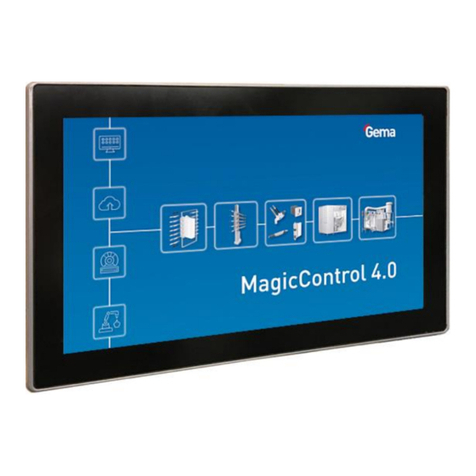
Gema
Gema MagicControl 4.0 Operating instructions and spare parts list

Pro-tec
Pro-tec Algo-Tec 6500 Commissioning manual
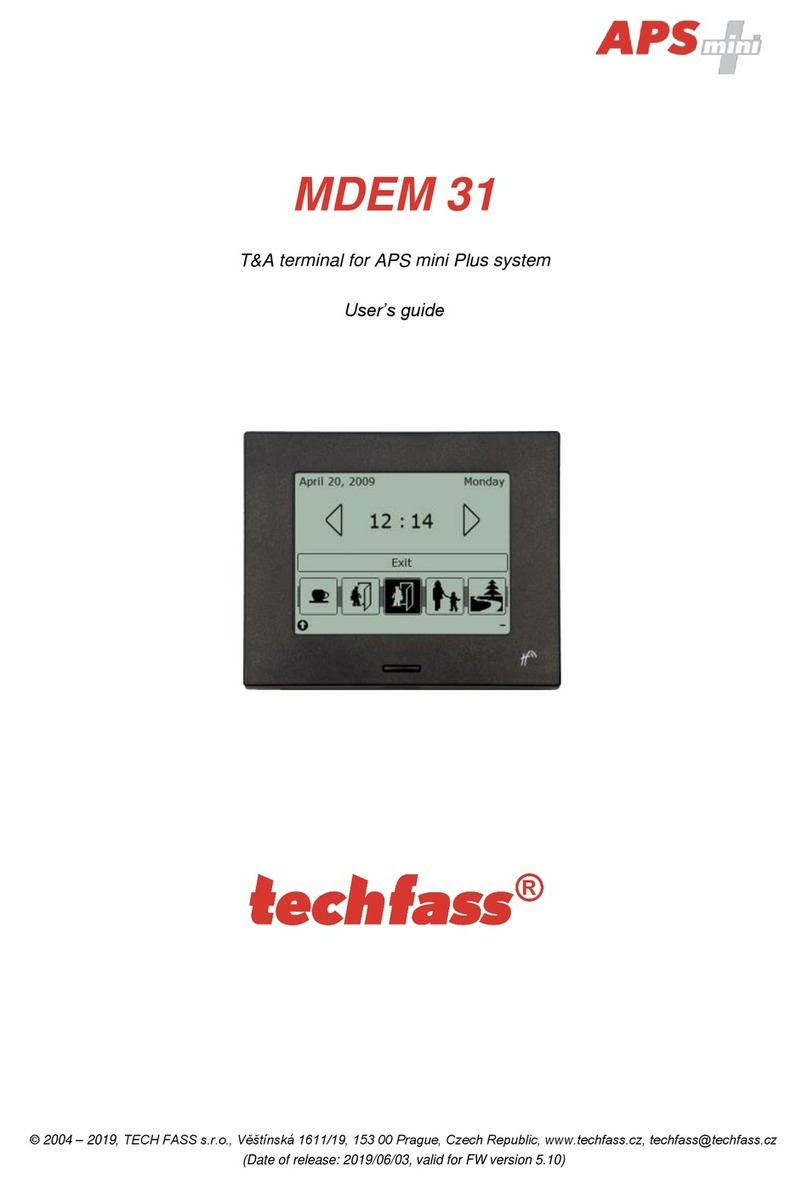
TECH FASS
TECH FASS APS mini MDEM 31 user guide

Spraying Systems
Spraying Systems 1550+ AutoJet quick start guide
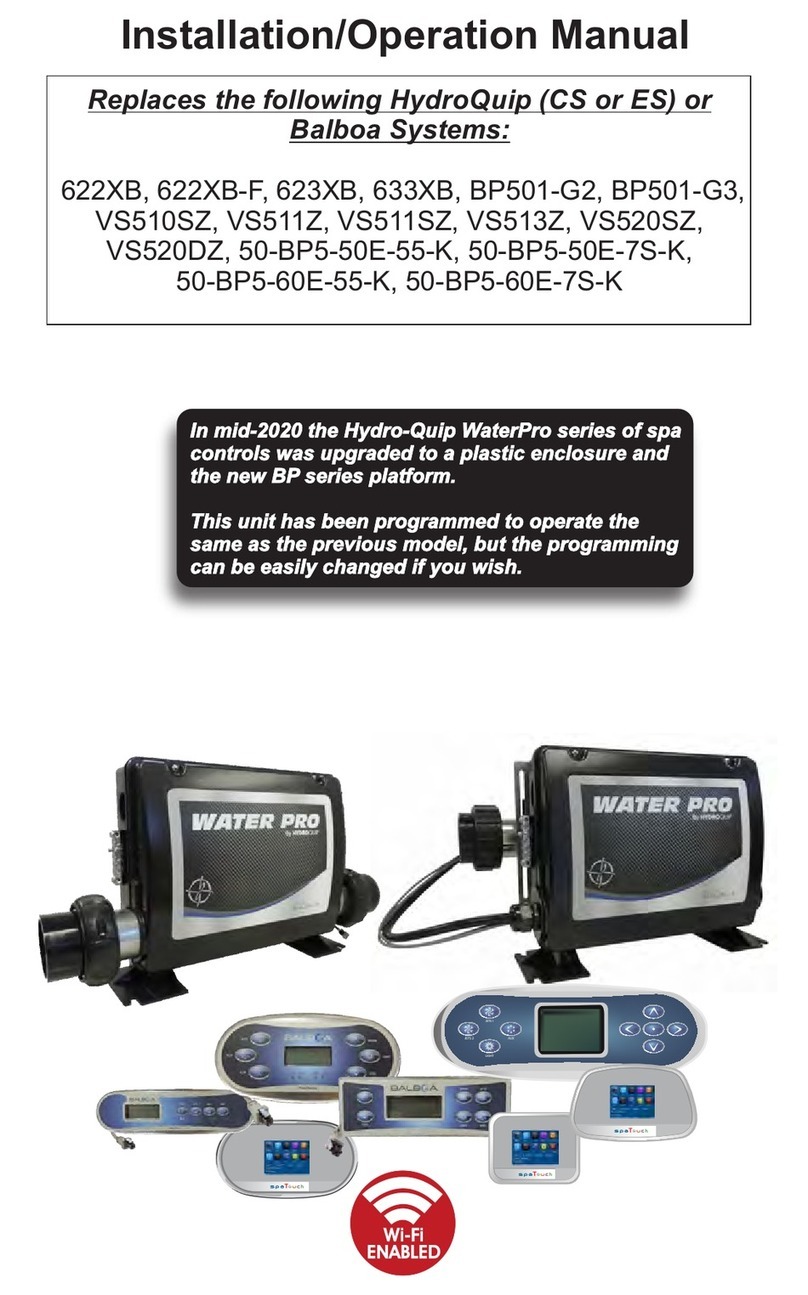
HydroQuip
HydroQuip WaterPro 622XB Installation & operation manual
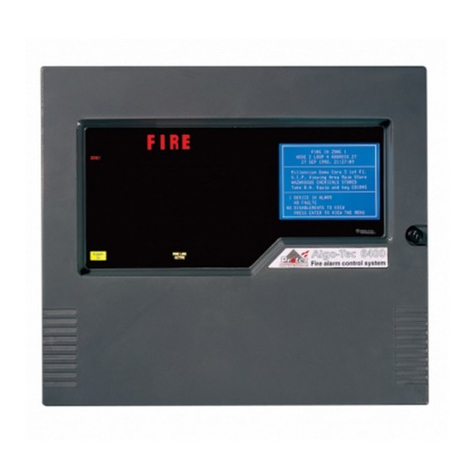
Pro-tec
Pro-tec Algo-Tec 6400 Quick operating guide
